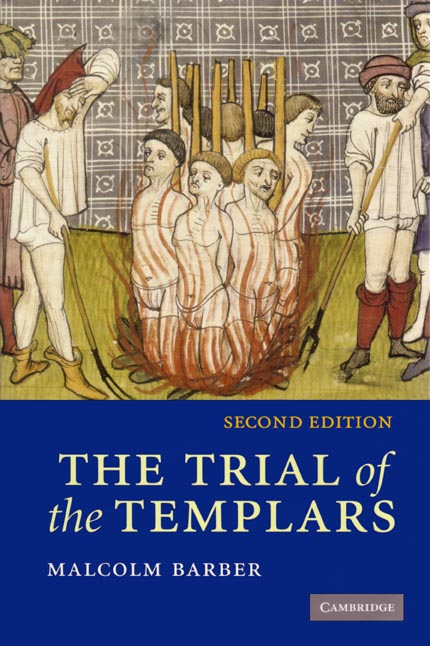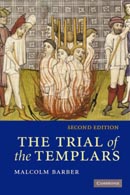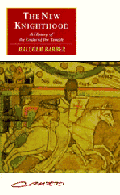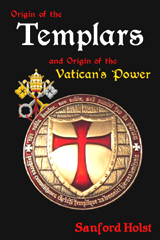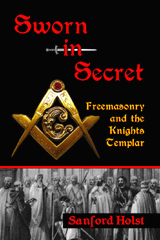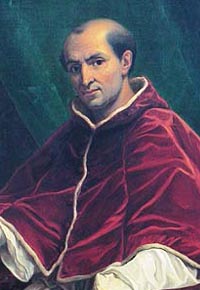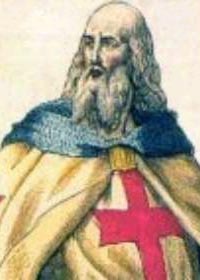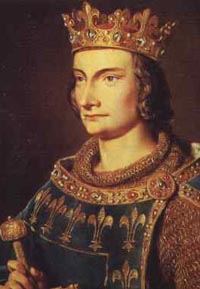|
trial of the templars by malcolm barber, book review |
||
|
|
||
|
|
Trial of the Templars
The Trial of the Templars by Malcolm Barber Book Review Professor Malcolm Barber of the University of Reading has gained a well-earned reputation as the world's leading expert on the Knights Templar. The great book which led to this recognition was The Trial of the Templars (1978), and it is reviewed here to show its value and content. This book was followed by The New Knighthood (1994) and his other works on Medieval subjects.
Surprisingly enough, even though the trials of the Knights Templar took place during the 1300s, there were copious volumes of written material from those days, and they provided great grist for Malcolm Barber's mill. This was due to the Templars having been put on trial by the Catholic Church, which kept meticuous notes of what happened during those charges and denials. Barber rescued his effort from becoming a dry academic recounting by virtue of his use of historical material to tell something about the Templars and their times as preamble and context for the trials. From the trial transcripts: A certain person in secular habit came into their presence, who was said to have come on behalf of the matter of the said Templars. Asked by them his name, status and the reason for his arrival, he replied that he was called John of Melot, and that he was from the diocese of Besançon, and he showed a certain seal on which the aforesaid name seemed to be engraved, which seal he asserted to be his. He said also that he was from the Order of the Temple and that he had worn the habit fo the Order for ten years, and that he had left that Order, and that never, swearing on his soul and faith, had he seen or heard or known anything bad about the above-mentioned Order. .....Trial, page 141. The book begins with an introduction of the main participants in these epic events that shocked and enthralled the people of that time, and still hold a certain fascination to the present day. The Templars are followed from their eviction out of the Holy Land in 1291 to the installation of their new Grand Master, Jacques de Molay on the island of Cyprus. The Popes are then seen as enduring several short reigns and mysterious deaths, some of which are traced back to the King of France, who exercised undue influence over them. In this time of concern over heresy, harsh inquisitorial methods were used, and in this environment Clement V was installed as pope. King Philip IV of France was the other major player -- and the chief architect -- in the events that were about to unfold. He had a hand in the raising of Clement V to the papacy and Philip's poor finances had made him a recipient of Templar loans and banking services. His desire to harvest all the Templar properties and wealth in France for himself put him at odds with the pope, and resulted in a tug-of-war in which both sides pulled tight the noose around the Templars' necks. Barber uses transcripts of royal and papal letters, plus other sources from those times, to spell out the events clearly. From the papal letter Pastoralis praeeminentiae: (The Grand Master) spontaneously confessed in public in the presence of the most important ecclesiastical persons in Paris, the masters of theology and others, the corruption of the error of the denial of Christ in the professions of the brothers, introduced at the instigation of Satan, in contradiction to the original foundation of the Order. .....Trial, page 90. With the arrest of the Templars on October 13, 1307 all across the country of France, full preparation for the trials began. This was complicated by the fact that the king of France wanted the other kings of Europe to arrest their Templars and thereby support his actions. Yet he had no authority over them to force their hand. So King Philip leaned on the pope to exert spiritual authority over the other kings, even to the point of excommunication if need be, and most of the other kings fell in line. In this manner many Templars were arrested and turned over to the church for trial, but many other Templars escaped. It is the progress of the trials, then, which makes up the body of Barber's work. From the testimony of a Knight Templar: (Adam of Walincourt) wishing to enter a more severe Order, asked permission and entered the Order of the Carthusians, in which, persevering for a short time, he asked, with long instance of prayer, to return to the Order of the Temple; he was received, saving the discipline of the Order, since he came naked with only a thigh covering, from the outer door to the chapter, in the presence of many nobles, relatives and friends, with all the brothers present; and genuflecting in the presence of the preceptor, who was holding the chapter, he asked mercy, and asked again, with tears, that he be admitted into the company of the brothers; he made solemn penance for a year and a day, by eating on the ground for the weekdays of that year, by fasting on bread and water every Sunday, by going naked to the altar in solemn masses, by receiving discipline at the hand of the priest; and afterwards he recovered the habit and the company of the brothers, according to the statutes of the Order. .....Trial, page 170. The strange fascination caused by hearing accusers and defendants from the 1300s arguing their cases keeps this fact-filled narrative from getting bogged down, as would otherwise happen. Various kings and the pope likewise argue their cases back and forth in their declarations and through their actions. As we move from country to country, the words change but the music remains the same; in all events it is a sad ballad for the Templars. Torture and trials come again and again as Philip and Clement seek the justification for their actions that never really comes. In the end, a significant number of Templars die in prison or by being burned at the stake, including the Grand Master Jacques de Molay. From the chronicle of William of Nangis: (When fifty-four Templars were burned to death outside Paris) all of them, with no exception, fianally acknowledged none of the crimes imputed to them, but constantly persisted in the general denial, saying always that they were being put to death without cause and unjustly: which indeed many of the people were able to observe by no means without great admiration and immense surprise. .....Trial, page 178. This book stirred such renewed interest in the Knights Templar that Barber was moved to expand on this last-days-of-the-Templars work and address their whole history. He accomplished that sixteen years later in The New Knighthood. » Review written by Sanford Holst Available at Amazon:
Related Books Available at Amazon:
________________________________________________________ Rare Masonic books, Civil War, Best Masonic books, Masonic directory, Masons Templars, Masonic research Masonic authors, Civil War2, Templar medals, Table Lodge Buffalo Bill Cody, Quarry Project, Old Time Freemasonry Sworn in Secret, Early American, Knights Templar, Civil War3 Latest books, Born in Blood, Solomon's Temple, Coil's Encyclopedia York Rite, Allen Roberts, John Robinson, 2010 symposium, Allen Price Grand Lodge England, Holy Grail, Kabbalah, Nadia, Robert Burns Masonic education, UCLA, Stonemasons, Scottish Lodge US Lodges, UK Lodges, Canada Lodges, Australia Lodges Templar Swords, Freemason, Templar Trials, Templars Vatican Origin of Freemasonry, Templar history, Freemasons history © 2008-2024 Sanford Holst - web design by webwizards |
Trial of Templars
Clement V
Here you experience revealing details of the Knights Templar that go beyond what is commonly shown about them. What events and people brought them to such great heights that they became legendary? What symbols, swords and citadels helped shape their lives? What were their traditions and how are they used today? You will discover all these things here and in the referenced books. If you can shed additional light, your comments are welcome.
Jacques de Molay
Philip IV |







